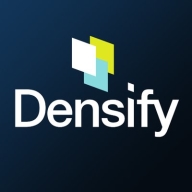

Densify and Nutanix Prism compete in the cloud optimization and infrastructure management category. Nutanix Prism has the upper hand due to its extensive features and long-term value, whereas Densify attracts with its cost-effective solutions.
Features: Densify offers real-time optimization analytics, predictive analytics, and resource efficiency insights, providing precise cloud cost management. Nutanix Prism provides comprehensive infrastructure management, advanced automation, and streamlined operations, ensuring efficient resource allocation with its robust automation capabilities.
Room for Improvement: Densify could enhance integration capabilities with ITSM solutions, provide more comprehensive support for hybrid cloud environments, and expand its predictive analytics to cover broader use cases. Nutanix Prism might improve its initial setup process, offer more competitive pricing, and enhance multi-cloud management features.
Ease of Deployment and Customer Service: Densify is known for a streamlined implementation process and responsive customer service. Nutanix Prism also provides efficient deployment, supported by a robust customer service team that enhances infrastructure management.
Pricing and ROI: Densify offers a cost-effective entry with competitive setup costs, focusing on cost optimization and yielding significant ROI. Nutanix Prism, requiring a higher initial investment, justifies it through enhanced ROI attributable to its broad feature set and long-term value delivery.


Densify is a hybrid cloud and container resource management platform that makes workloads self-aware of their precise resource requirements and automates the resource management and selection process. This solution helps you control your cloud spend and also helps your apps perform and scale better. Densify enables you to match your cloud requirements with the optimal cloud supply. Additionally, Densify is the only technology that leverages patented, predictive machine learning-powered analytics to perform advanced modeling of workload patterns, and provide precise optimization directives. It is ideal for cloud engineers, container platform owners, and IT finance.
Densify works by:
Densify Features
Densify has many valuable key features. Some of the most useful ones include:
Densify Benefits
There are many benefits to implementing Densify. Some of the biggest advantages the solution offers include:
Nutanix makes infrastructure invisible, elevating IT to focus on the applications and services that power their business. The Nutanix enterprise cloud platform leverages web-scale engineering and consumer-grade design to natively converge compute, virtualization and storage into a resilient, software-defined solution with rich machine intelligence. The result is predictable performance, cloud-like infrastructure consumption, robust security, and seamless application mobility for a broad range of enterprise applications.
We monitor all Virtualization Management Tools reviews to prevent fraudulent reviews and keep review quality high. We do not post reviews by company employees or direct competitors. We validate each review for authenticity via cross-reference with LinkedIn, and personal follow-up with the reviewer when necessary.